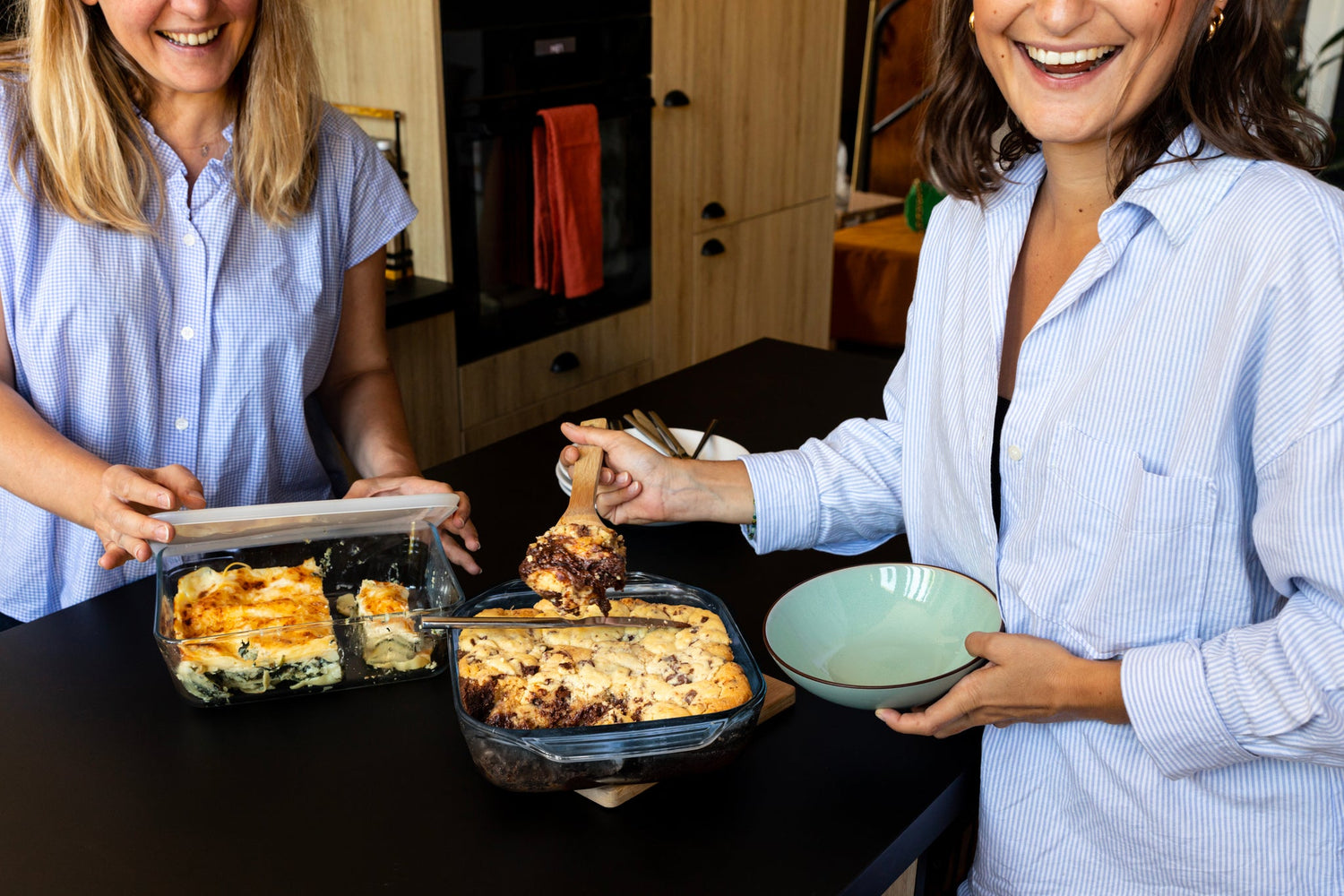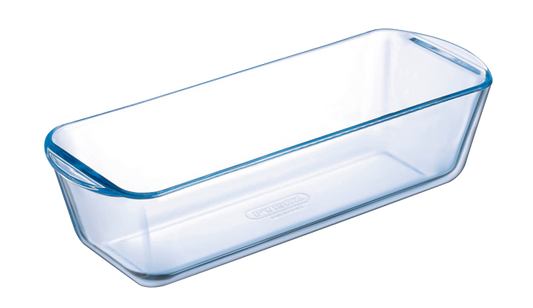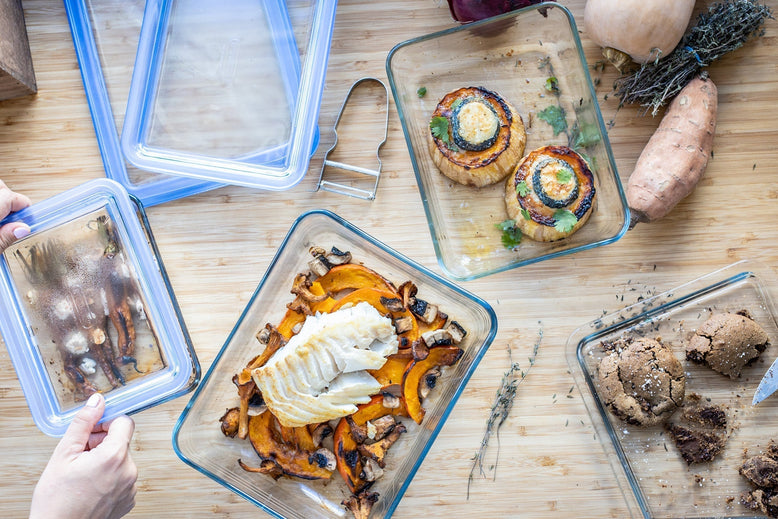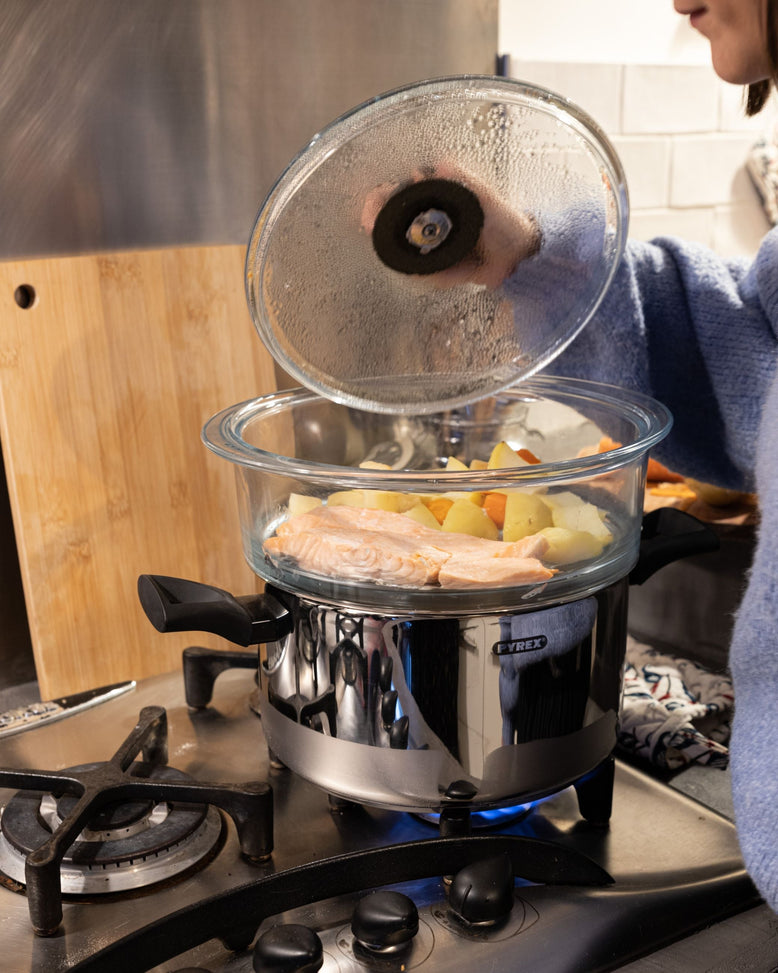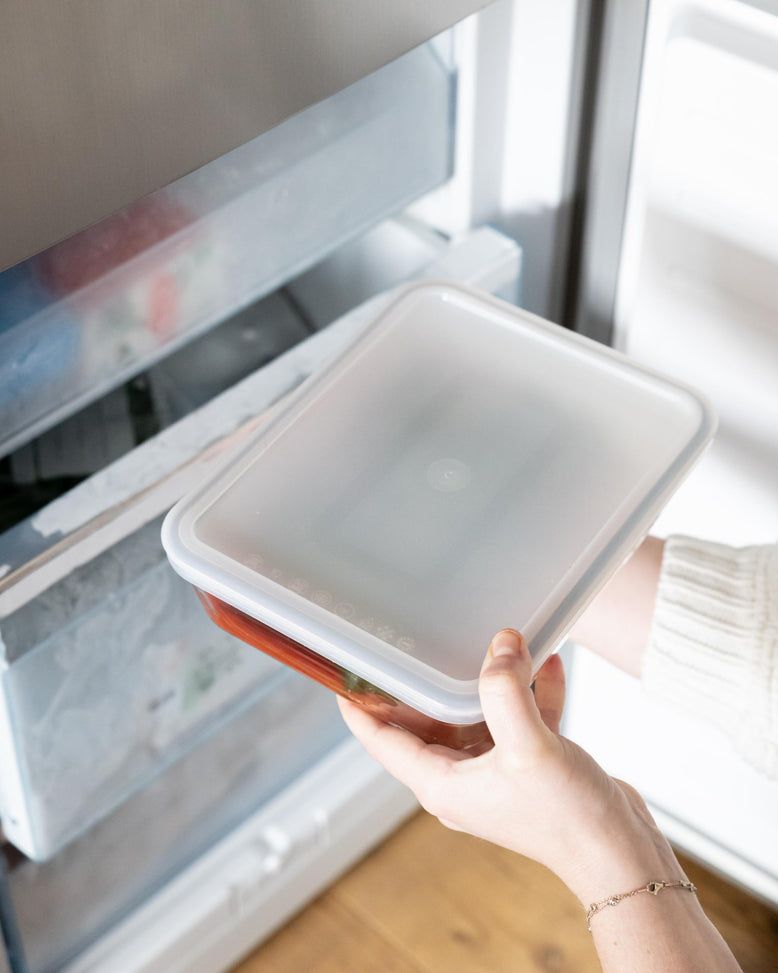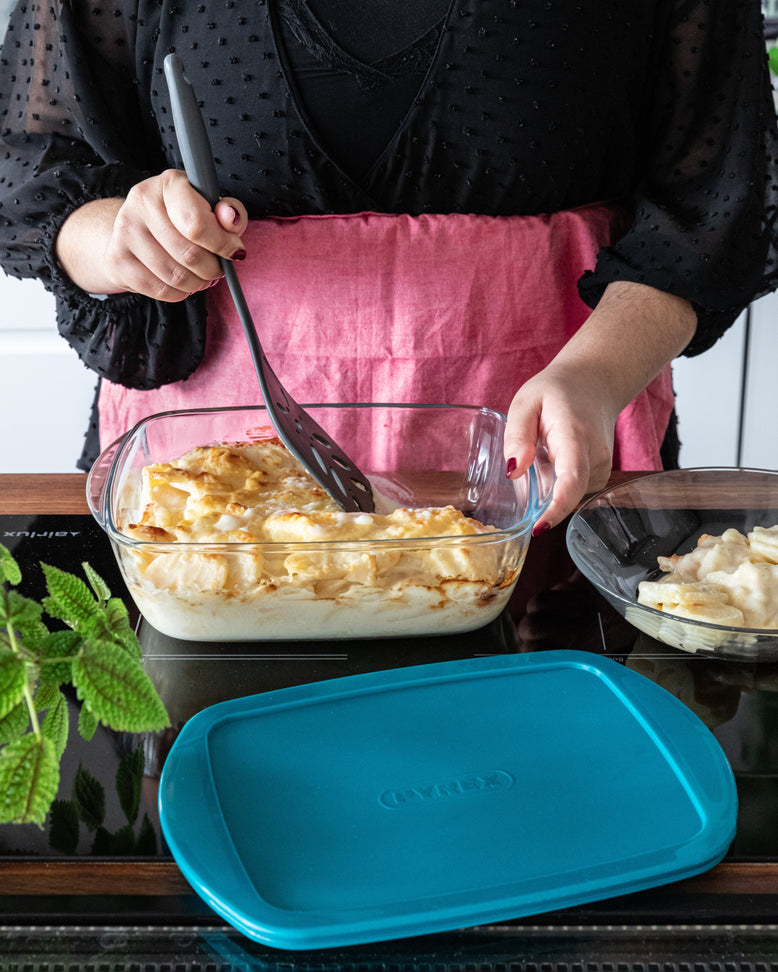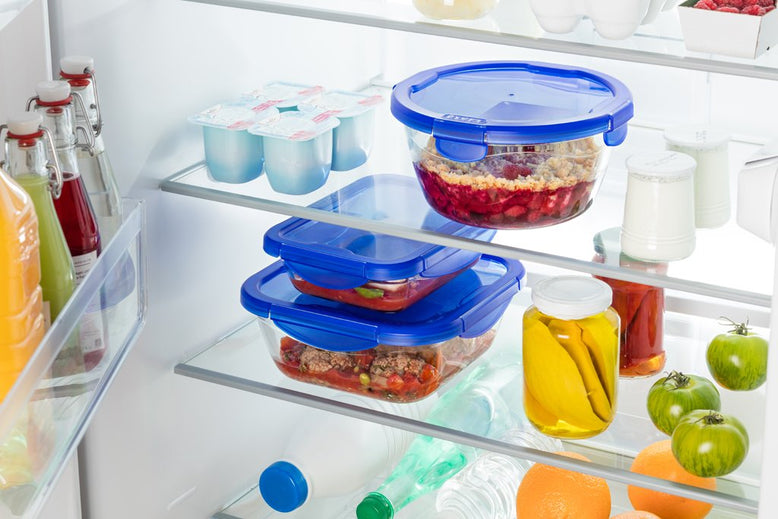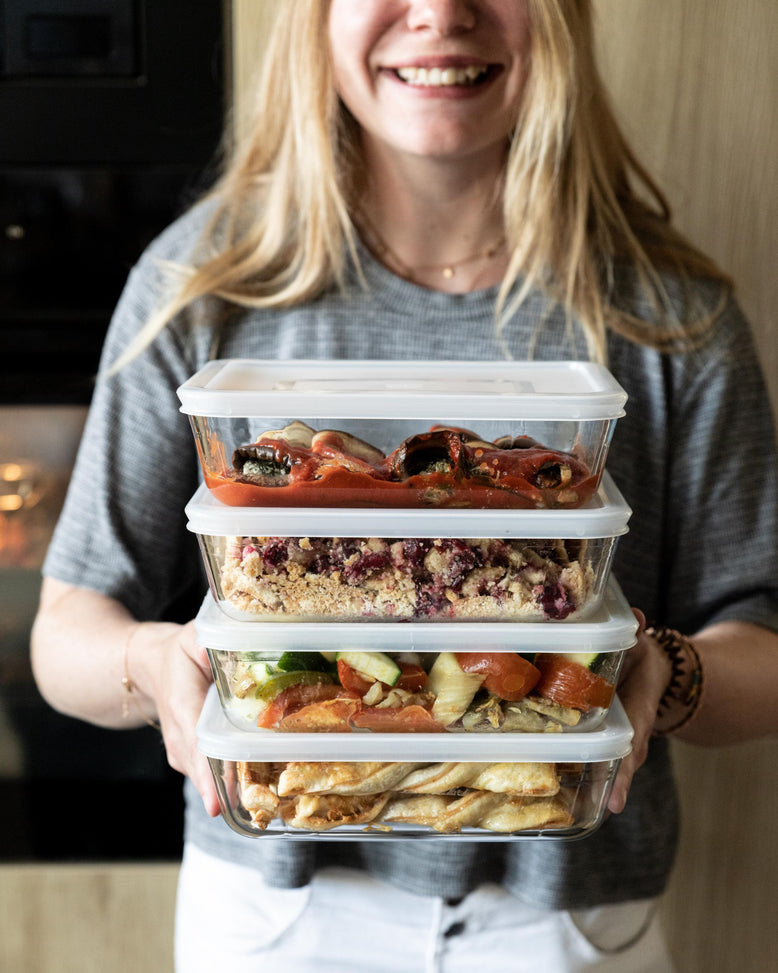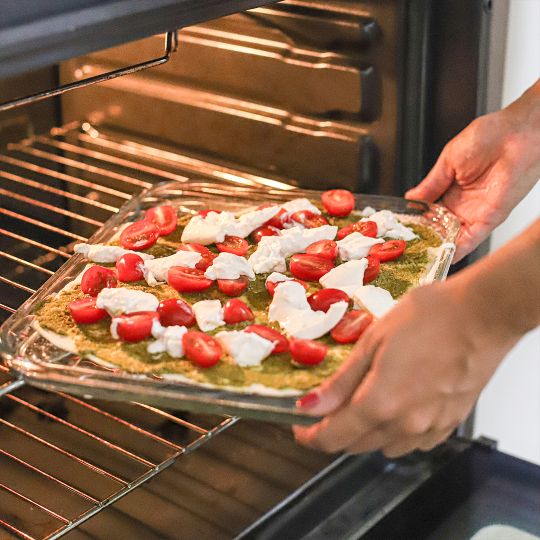How to choose a cake tin?
Choosing a cake tin isn’t just about size. Once traditionally made of earthenware, then metal, the arrival of glass cake tins — and later silicone — has transformed the way we bake desserts. Let’s take a closer look at cake tins by preparation type, cooking method, and size.
Which tin for which cake?
It’s easy to think that all tarts bake in the same tin. Not true! Why? Because a tarte Tatin is thicker than a classic tart, so its tin needs higher sides. That’s why it’s useful to have several types of tins at home.
Wondering where to store your cake tins? Sort them by diameter and simply keep them in your oven if cupboard space is limited.
In fact, there’s almost a tin for every type of cake. So, if you’re asking yourself which tin to choose for your bakes, here’s our guide:
Tart tin: the most popular of all. Available in glass, ceramic, or metal, with or without a removable base, with or without handles. Perfect for sweet and savoury tarts such as apple tarts or quiches. They come in different diameters and may or may not have a non-stick coating.
Loaf tin: rectangular in shape, ideal for sweet and savoury cakes, fish loaves, and terrines. Originally made in ceramic to ensure deep, even heat thanks to the clay, it is now available in glass, metal, and silicone.
Springform tin: particularly practical as there’s no need to turn out your bake. Just release the clasp to remove the side of the tin — no more failed unmoulding or collapsing cakes. Available only in metal so it can open easily, with a leak-proof base perfect for cheesecakes, tarte Tatin, or delicate savoury dishes.
Soufflé dish: a timeless classic every kitchen should have. The soufflé needs no introduction, although its legendary tendency to collapse is well known. Pyrex® shares its top tips:
-
Always preheat your dish before pouring in the mixture
-
Always use fresh ingredients
-
Whip the egg whites to soft peaks rather than too stiff, for the perfect rise
-
Fold in the egg whites with large, gentle movements
-
Never open the oven door during baking
Round cake tin: the other star alongside the tart tin. With its high sides, it’s versatile enough for thick tarte Tatins, chocolate cakes, or yoghurt cakes. Pyrex® offers a classic glass version, loved for generations, and two scratch-resistant metal tins in different diameters.
Individual moulds: nothing more delightful than serving a dessert in individual portions. Perfect for muffins, mini cakes, or mini tarts, such as the Pyrex® collection of metal moulds. The set of 4 mini tart tins with removable bases is always a hit with both children and adults.
What type of baking do you prefer for your cakes?
Baking a cake doesn’t always mean using a conventional oven — even if that remains its main destination. Whether you prefer a traditional oven, an air fryer, a microwave for express recipes, or even an electric multicooker, there’s a tin for each method.
A traditional oven works with all types of tins, except certain silicone models that tolerate only low heat. Never bake a cake in the microwave with a metal tin, as it can damage the appliance. For multicookers, you can choose between borosilicate glass, metal, ceramic, or silicone cake tins.
Which material should you choose for a cake tin?
Glass cake tin
Among all the baking equipment, the glass cake tin stands out for its excellent resistance to high temperatures and its ability to provide gentle, even cooking. Easy to clean, safe for your health, and transparent, it also lets you keep an eye on your cake as it bakes.
Its drawbacks are threefold:
-
It is not non-stick, so we recommend adding a little fat to prevent sticking.
-
It may break if dropped.
-
It is slightly heavier than silicone or aluminium tins.
Silicone cake tin
Now one of the favourites among many home bakers, the silicone cake tin is seen as an excellent alternative to glass and metal thanks to its natural non-stick properties and dishwasher-safe cleaning. Available in a wide variety of creative shapes, it still has some drawbacks. Once filled, it’s not very practical to place in the oven as it tends to bend — it’s best set on a baking tray. Baking takes longer, it ages poorly by becoming greasy, and some low-quality silicone tins may transfer harmful particles to food. Always choose a premium model!
Non-stick metal cake tin
A classic in baking. Affordable to buy, it comes with a non-stick coating that makes turning out cakes easier. While the tin itself is durable, the coating is less so and doesn’t cope well with high temperatures, which may damage it and lead to harmful substances leaching into food. That’s why Pyrex® non-stick coatings are guaranteed free from PFAS, PFOA, and PTFE. Another precaution: using sharp knives on the coating risks damaging it.
Stainless steel cake tin
Perhaps the least known of cake tins. Stainless steel tins are highly durable and age well since they have no non-stick coating. They also deliver crisp, golden crusts. However, they may trigger allergies in sensitive people, as some metals can migrate into food when exposed to high heat.
Tinplate cake tin
Did you know this is the professionals’ favourite? Simply because it’s an excellent conductor of heat, inert, and manufactured without added chemicals. Long-lasting and easy to maintain with handwashing, though it tends to come out dull and grey if put in the dishwasher. With age, it may rust, but since it’s inexpensive, replacing it is easy.
Ceramic cake tin
Loved for its vintage look, which has made a comeback in recent years. Attractive enough to serve directly at the table, it often comes with a fluted edge for a stylish finish. However, lining with baking paper is essential, as removing cakes from it is almost impossible. It’s also fragile and sensitive to knocks due to its ceramic composition.
What size cake tin should you choose?
Whether you prefer glass, ceramic, or metal, your baking set will benefit from having tins in different sizes. You can opt for:
-
A set of small individual tins for mini tarts and brownies
-
A classic tart tin, 24 or 28 cm
-
A round cake tin (moule à manqué) for sponges
-
A loaf tin for terrines, pâtés, and sweet or savoury cakes
-
A springform tin for cheesecakes or delicate bakes that can’t be turned out
Why choose a Pyrex® cake tin?
Founded in 1915, Pyrex® was the very first brand to design glass ovenware and cake tins. Safe, odour-neutral, easy to use, heat-resistant, and ensuring perfectly even baking, choosing a Pyrex® cake tin means investing in kitchenware built to last.
In addition, Pyrex® also offers non-stick metal tins made from durable materials for long-lasting use in the kitchen — including a springform tin that has become a true classic.

